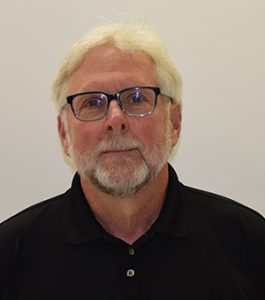
- This event has passed.
Industrial Process Research at MSU St. Andrews and Some Experiments in STEM
May 22, 2019 @ 3:30 pm - 5:00 pm EDT
William J. Kruper, Ph.D., Research Assistant Professor, Michigan State University, MSU St. Andrews
Adina Dumitrascu, Ph.D., Research Assistant Professor, Michigan State University, MSU St. Andrews
Presentation Overview
MSU St Andrews originated as the Michigan Molecular Research Institute in the 1960s in Midland, Michigan. Today, MSU St. Andrews is funded by Midland area Foundation grants as well as independent research grants from various industry and government agencies. A portion of our activities involves STEM programs with youth including 3-D printing, programming, astronomy, redox flow battery chemistry, as well as polymer and material science. We host a rather large hands-on program in environmental and industrial process chemistry for exceptional high school students. Our staff has over 150 years of industrial organic chemistry experience and we have direct access to major, required instrumentation.
 William J. Kruper
William J. Kruper
Lewis Acids and Various Applications
We will outline a program funded by Olin Chemical in the area of process catalysis for the synthesis of next generation, environmentally friendly, refrigerants for the automotive industry (HFO-1234yf to replace HFC-134a). Simple Lewis acids can promote tandem dehydrochorination/chlorination to achieve high yields of C3-chlorocarbon precursors in a single reactor with remarkable turnover. Students have also been involved in some curiosity-based research centered around a regioselective, catalytic process to make ZyvoxTM, a gram-positive antimicrobial used in the treatment of septicemia. We have recently published the mechanism of this general process (DOI:10.1021/acs.joc.8b02323) and will show the expanded synthetic utility in converting terminal vicinal-diolesters or epoxides to vicinal amidoesters in a one-pot procedure.
 Adina Dumitrascu
Adina Dumitrascu
Redox-Active Organic Substrates with Potential Applications in Energy Storage
The most prominent advantages of rechargeable Lithium Ion Batteries (LIBs) are high specific and volumetric energy, excellent charge-discharge cycle life, little or no memory effect, low maintenance and potential for battery reconditioning. However, there are still some safety concerns, often related to the danger presented by the inability of lithium-ion cells to tolerate recharging to potentials above the manufacturer’s recommended end of charge potential, i.e., overcharge. One way to overcome this drawback is to incorporate chemical compounds known as redox shuttles. These additives are generally organic compounds that undergo reversible electrochemical oxidation at potentials near the maximum design value. However, many of the compounds studied to date are either too expensive or not sufficiently durable for commercial applications.
In this presentation, we describe ongoing efforts to develop organic materials capable of undergoing reversible electrochemical oxidation at specific potentials for use in overcharge protection of lithium ion batteries as well as for the development of new catholytes in nonaqueous redox flow batteries (RFB) (Figure 1). We have employed several strategies to prepare novel organic heterocycles that exhibit such behavior. First, parent molecules were designed such that the molecular reorganization associated with oxidation to the radical cation is impeded, leading to a shift to more positive potentials without sacrificing stability. Second, numerous carbazoles and phenothiazine-5,5-dioxide derivatives were prepared and characterized chemical and electrochemically. These latter materials display highly reversible electrochemical oxidation and very good solubility in carbonate solvents, making them attractive candidates inorganic redox flow batteries (ORFBs) for inexpensive grid-level energy storage.
Michigan State University programs, activities, and facilities are available to all without regard to race, color, gender, religion, national origin, political persuasion, sexual orientation, marital status, disability, height, weight, veteran status, age or familial status. Please inform us if you need any accommodation for accessibility at (517) 432-4499.

